Snapshot
Name: Paul Graham
Job: GB MD, Britvic
Age: 47
Born: Market Harborough
Lives: Ballinger, Chiltern Hills
Family: Married to Sarah with four children: Ollie (16), Harriet (14), Henry (9) and William (3)
Degree: Management Sciences, University of Manchester
Career: ICL (1989-1992), Mars (1992-1997), United Biscuits (1998-2012), Britvic (2012-)
Best career decision: Moving to fmcg with Mars
Worst career decision: Thinking computing would be exciting
Career highlight: Not got there yet
Career lowlight: Recovering from flooded factory at United Biscuits
Best advice received: Be fully expressed
Business mantra: If it’s not happened in a shop it’s not happening
Most commonly used phrase: Can I fit this in the diary?
What book are you reading/have just read? Uwe Rosler autobiography, Knocking Down Walls (it’s a Man City thing)
Last good film you saw? Whiplash
In the summer of 2012, as Paul Graham was working his notice to join Britvic, the soft drinks giant was rocked by a £25m Fruit Shoot recall. A month later AG Barr launched an opportunitistic takeover bid. Redundancy beckoned before Graham had even started. So Britvic’s GB boss has the Competition & Markets Authority to thank for saving his job.
But he is also grateful to Barr’s for “the wake-up call”. While Barr identified £30m-40m in cost synergies, Britvic’s defence was built around the fact that the vast majority were on the Britvic side. “When the merger didn’t happen, the opportunity was there to review the costbase and get fit,” he recalls.
That meant closing the Huddersfield and Widford plants and outsourcing its field sales operation.
And it’s a good thing Britvic is “fit” because the soft-drinks giant is operating in a challenging market to say the least. There are two “resets” in play he says: Tesco’s Project Reset (and “solving the conundrum of managing the channels” amid the wider big four reappraisal) and the “Consumer Reset”, with health-conscious customers demanding change and a fierce anti-sugar lobby to contend with.
And then there’s the weather. “It’s been a challenging year. The poor summer for anyone who sells seasonal drinks has not been great. But despite that I think we will come out the year gaining,” says Graham.
In its half-year results last week, GB sales of carbonates fell by just 0.4% to £565.7m [52 w/e 27 September], and volumes were up 0.2%, with Pepsi Max continuing to perform “really well”. On the other hand sales of its still drinks fell 4.1% to £321.6m with volumes down 0.4%.
“Whereas the overall market is broadly flat, with a smidge of volume growth and a little bit of deflation, there’s some quite significant differences in segments,” Graham notes. “Water is growing significantly. But then so is energy. It’s about having a clear position on the reset, and where the portfolio sits.”
On the carbonates side, the long-standing focus on Pepsi Max and its male, millennial consumer, continues to pay dividends, with “fantastic growth”. The relationship with PepsiCo is “dynamic”, “collaborative” and “flexible”, he adds.
It’s growing Britvic’s stills portfolio - Robinsons, Fruit Shoot, J20 etc - where the most energy is being consumed. “It’s partly because of economics. Also, they’re our brands. They’re the things our factories make.”
So Graham’s mission is clear. “It’s about marketing to drive penetration and awareness; identifying new usage; inspiring customers; and solving the conundrum of managing the channels. There are loads of great opportunities. But also some bear traps.”
The war on sugar is certainly one of those.
“We have to face into the obesity issue. I have four kids and I want them all to be fit and healthy. But the obesity question is a complex one. Narrowing it down to one ingredient in arguably one category doesn’t do the complexity of the situation justice. It clearly creates a focal point. But does that change behaviours and lead to outcomes we want?”
With a concerted and ongoing reformulation programme (and a long-standing commitment on front-of-pack labelling and ads only promoting Pepsi Max) Graham believes Britvic is taking its responsibilities very seriously. And having delisted all full-sugar lines of Fruit Shoot, Britvic is “starting to see the benefit of our position”.
“It’s all green label on traffic lights. The last six months have been very positive. We have to give mum and dad a product they are confident and happy to give to their kids, and at the same time create a fun active brand that kids want to be associated with.”
Tough Mudder
That’s why Fruit Shoot is at the same sponsoring a junior version of ‘Tough Mudder’ called Mini Mudder.
“There were 15,000 at Windsor [at a recent event],” he recalls. “We have a purpose-built, scaled down, muddy assault course for real active kids to get their teeth into.”
And Graham is unapologetic about Britvic’s attempts to link soft drinks with physical activity. “But you have to have clear linkage and credibility,” he adds. “There’s a question of activity and hydration. As a category the need for hydration has got lost in the swamping of the sugar argument.
The challenge with Robinsons is rather different. “It should be in a great place. It’s a water flavourer, it’s low cal - five or six calories - and it’s good value for money, 5-10p per serve.”
Investment in Robinsons continues, with two new flavours and a new formulation “so we’re confident it’s the best money can buy”. But the performance of the segment has lagged the overall category. “The challenge is keeping squash contemporary,” says Graham. “How does it not become a larder product? How does it become a fridge product? How do we make it happen out of home? How do we make it premium? How does it span the ages?
Still, Graham is encouraged by share gains in the last 12 weeks. And he still believes there’s “huge potential in flavoured hydration, with big plans going forward”.
Sales of Squash’d, launched in 2014, are in line with 2014. “The seasonal uplift was more than expected so it’s suffered from the poor weather.” And while it’s “good for value creation”, Graham admits: “we still have a job to create awareness and change habits. It’s a question of consistency of engagement.”
Britvic also introduced Teissiere, the no1 syrup in France, this summer. Graham is pleased with its performance, claiming RSV of £1.7m to date. “We’ve got good distribution. The repeat rate is really good. If you look at the response on social media, you would be very encouraged. I am. But we have to get the awareness and trial up. It’s another product that creates value, it’s a premium offering, and London is the fourth biggest city in France.
Discounters
As much as Britvic looks to trade the consumer up, however, there’s a strong undercurrent of deflation to contend with. “We have challenges around discounter pricing on own-label [squash],” he admits. “The reality is we’re in a segment where we’re taking value out. Volume is only marginally down.”
That’s not the only headache the discounters create. As Graham acknowledges: “You can’t have long-term sustainable growth without increasing penetration,” And that means working with the discounters.
“We have to be where people are going. But the journey for us on discounters is to look at them in a little more detail than just discounters. There’s a difference between the German food discounter vs frozen vs fixed vs multiprice. There are four different models.”
The other challenge is on the supply chain side. “We have to provide flexibility and adaptability of offering across the multitude of trade channels. And providing different packs that suit the different strategies can drive SKU count and complexity. So you have to be clear on the value strategy of your brands to enable you to operate consistently across diverging retail strategies, ie high-low, medium-low, EDLP.”
It’s for this reason that Graham actually welcomes Project Reset. “The range simplification piece - having a clear pricing architecture, and a clarity of offer, with shoppers able to shop easily and quickly and efficiently, and the ability to replenish and keep availability in a good place - has to be the right thing.”
But Graham is clear that penetration isn’t just about the discounters, or simplifying the consumer proposition. “We need to be recruiting new people or bringing back lapsed people. Or both. So the challenge is: how we increase availability, how we engage better in the adult space, the dilutes space, the people who are switching out of full sugar. Where are they going?”
As well as taking out sugar, Britvic plans to reduce the sweetness of some drinks, though Graham admits “that’s not done yet”.
And again the supply chain can be a limiting factor when it comes to NPD. “On pack size there are some things we would like to do - like getting portion sizes to hit calorie points rather than price points - is hard.”
So what’s the next big thing? With CEO Simon Litherland’s background in spirits, it’s no surprise to learn that Britvic is considering new mixers. “We see it as a big opportunity. But we would particularly like to develop alcohol-free as opposed to soft drinks, ie more sophisticated products and flavours.”
And Graham is particularly keen on the softer energy/vitality space. “That better for you, give you a lift but not head banging taurine and 28 teaspoons of sugar type of drink.” The best is Britvic’s Purdeys brand, he says, but he also singles out Vit-Hit and Little Miracles as interesting brands in this space.
“I wouldn’t expect us to be passive forever,” he adds.
Chinese walls
To achieve growth in a tough trading environment, Graham has also moved from three to two trading channels (at home and out of home). “There’s such a blurring of distinction in terms of customers, who’s operating in which market, that having that Chinese wall internally was not helpful,” he explains.
As well as recruiting Unilever’s Phil Sanders earlier this year to head up at home sales (“a really big job and a challenging remit”), Graham has brought in Linda Fairbrother (also from Unilever) to fill a new role within Britvic as head of category planning. “We were more brand led before. We’ve taken a clear choice to focus on kids, family, adult, asking what’s the opportunity, where it’s harder, and only then, where does Britvic fit in those spaces?”
And this “big piece of work around organisational competency” hasn’t been limited to the GB leadership team. He’s also involved “the directs of my directs”.
“I’ve really focused on their inclusion in the thinking and activation of the business. Getting them to really buy into the purpose, vision and values. The multiplication impact of having 40 engaged people who are managing hundreds of people is really powerful.”
As you may have noticed, Graham is partial to the odd bit of management speak. To achieve the right “outcomes” Graham likes to “be fully expressed”. The phrase, gleaned from a development programme he attended, was “a big personal unlock”.
It’s clearly therapeutic.
“I use it to ensure I’m open, accessible and really clear with people about what I’m feeling,” he explains. “For example whether I’m feeling inspired, motivated, challenged.”
But it’s a two-way thing, says Graham.
“We spend a lot of time working on our feedback with each other, our collaboration, being able to have authentic and open conversations about where we’re good, how we can get better, how we are co-reliant with other people, channelling the strength of that team and that interaction. With the challenges getting harder, that will be even more important.”
Of course, this inward focus has the additional benefit of avoiding contact with awkward customers. But there are a number of external metrics that Litherland has set the team as part of his mission to create “the world’s most admired soft drinks company.
“We look at five stakeholders. Consumer, customer, people, shareholders, community. Against each of those we’ve set ourselves some big goals. When you walk around the office and see them, some of them are a bit daunting. You think ‘crikey’! There’s a whole succession, in terms of brand equity, external awards, the Advantage survey, ebit, share price, communities (we work on Business in the Community), plus we’ve introduced Great Places to Work as a measure.”
The modern, open-planned, Regus-managed offices in Hemel Hempstead are certainly a far cry from the “tired, basic” Chelmsford offices of old. “Part of the Britvic journey was about creating a central home that was open and accessible to a broader range of employees, and creating a workplace to encourage interaction and co-creation.
Since moving in Britvic has expanded from one floor to three, adding a customer collaboration centre (to help create an environment that’s closer to a retail experience), and bringing in the HR department and R&D from Widford.
And although Britvic operates on a flexi-desk basis, with 300-400 people in the building, the office now incorporates many more people than we originally planned. “Whilst a lot of businesses have gone down the home working route, with flexi-working arrangements, we’ve probably gone the other way.”
But it’s worth it, says Graham.
“The connection really helps to get the innovation agenda and the focus on the actual product front of mind.” It’s tough going for Britvic, like a number of suppliers. But the team is together, he insists. And that’s half the battle.







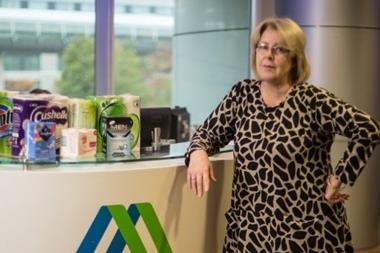

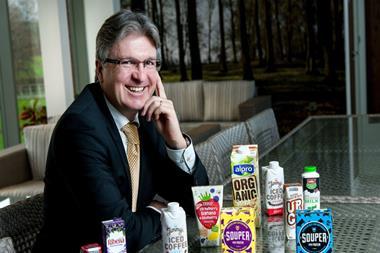
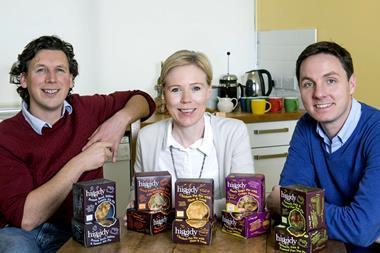
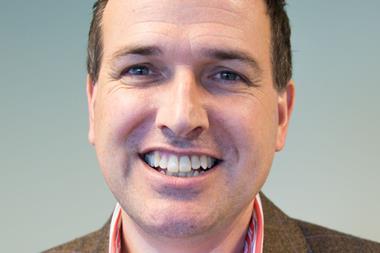



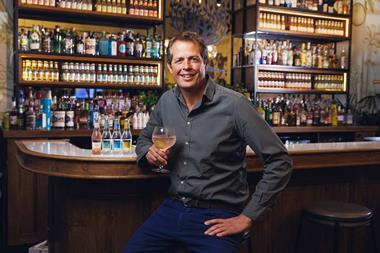
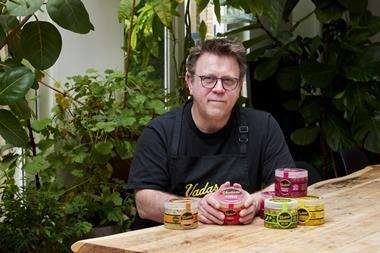
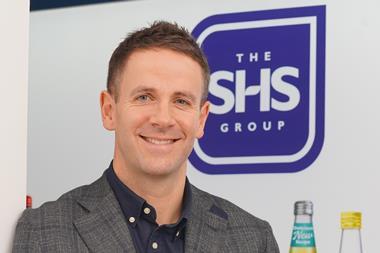
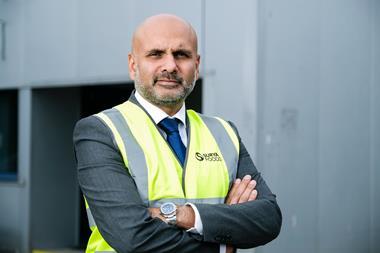
No comments yet